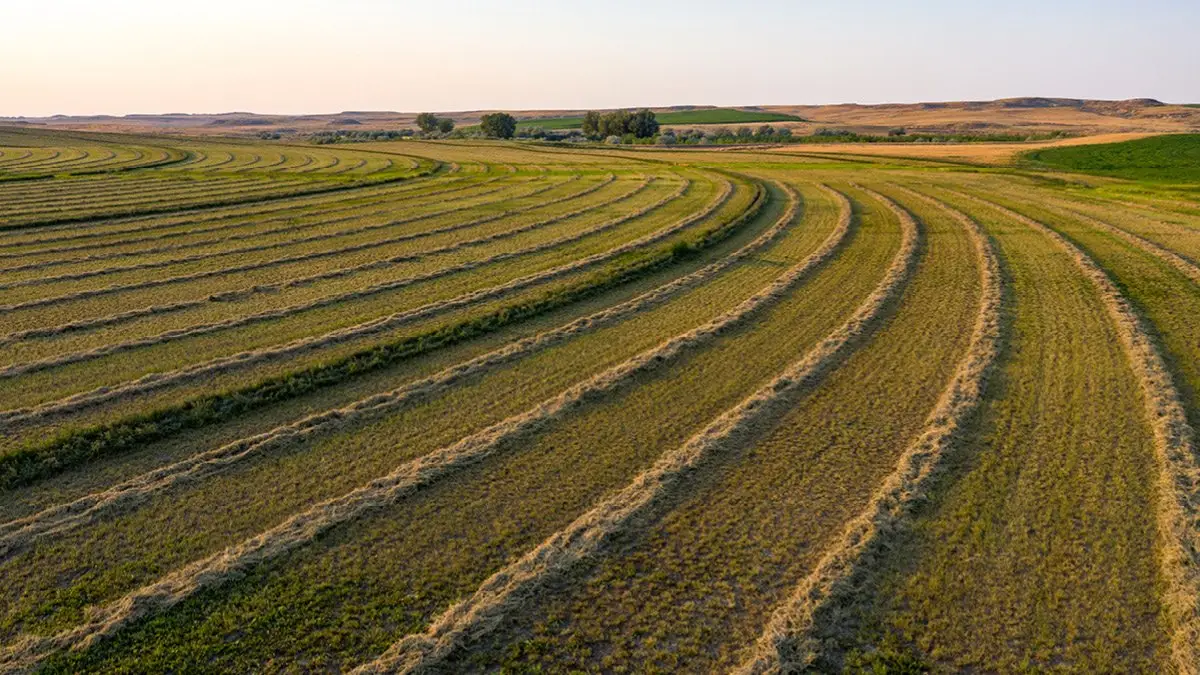
image: blogs/Rye cover crop coming up between corn rows in October. Seed was flown on in early September.
With a wet spring causing delayed planting, Peoples Company Land Managers are seeing a broad range of growth stages on mid-summer farm tours. Some areas are right in line with the 5-year average while other areas did not see soybean planting until June. But time marches on and Fall is fast approaching; it is time to firm up plans for 2019 cover crops.
Cover crops are one of the corner posts of conservation practices in Midwest row crop operations. Planting a small grain after harvest provides many interconnected and valuable benefits. To name just a few:
- Reduces erosion, keeping valuable topsoil on the farm.
- Slows rainwater as it moves across a farm, allowing opportunity for infiltration.
- Increases organic matter.
- Extends months of the year living cover that increases soil biodiversity and biological activity.
- Scavenges nutrients, keeping expensive crop inputs in the field versus in our water sources.
The benefits listed above boil down to improved soil health. And the importance of soil health should be at the forefront of every landowner’s mind; improved soil health increases productivity that increases annual return and long-term appreciation of the farm.
While going out and planting cover crops sounds easy on paper, there are variables to consider. When making cover crop plans, species selection, seeding rate, application method/cost, termination method/cost and past herbicide resistance must be considered. And the benefits of cover crops are not immediate in the first year; it is a conservation practice that builds on each year of implementation.
With the added expense and management considerations, it is understandable that operators may be hesitant to experiment with cover crops on rented land. It makes more sense to experiment and fine-tune cover crops on owned land where the operator has an investment in long term improvement.


Images: The above farm is a 160-acre farm in central Iowa. The landowner and operator have identified 25% of the field with the most conservation concerns and are experimenting with cover crops here first. Their plan is to move to 100% annual cover crops.
A catalyst for widespread cover crop implementation is non-operating landowners requiring cover crops on their land and sharing in the cost of early implementation. To start, landowners must communicate their goals with their operator and identify the concerns specific to their farm(s). Once a cover crop plan is established, specific terms can be included in the annual farm lease detailing both the landowner and operator roles for implementation.
Peoples Company sees the value in non-operating landowners taking an active role in conservation on their farms and seek to bring tools to the market to help assist those landowners. 2019 is the second year of the Peoples Company Cover Crop Initiative, a partnership with Stine Seed to offer landowners a paid-in-full, managed cover crops program. In order to qualify for the cover crop program, landowners must agree to have their land professionally managed by Peoples Company during a three-year term and commit to planting Stine Seed. Typical cover crop cost for seed and application is $30/acre.
To learn more about the initiative, please visit www.covercropinitiative.com. Non-operating landowners are encouraged to sign up now for 2020.
If you are a landowner wanting to invest in conservation practices to protect long term land value, let an experienced Peoples Company Land Manager help you. We will work with you and your farm operator to create a plan and execute planting in the fall. For more information, please visit www.peoplescompany.com or email landmanagement@peoplescompany.com.







